Donald Rodney (now deceased) will be represented by the work, Autoicon, a dynamic internet work and CD-ROM that simulates both the physical presence and elements of the creative personality of the artist Donald Rodney, who died from sickle-cell anaemia, on loan from the artists’ estate. He will also be represented by How the West Was Won on loan from the Tate. How the West was Won from 1982 was painted when Rodney was only 21 and a student at Nottingham Trent University. It dates to a time when he was part of the BLK Art Group, group producing work that engaged directly with the socio-political issues of the time.
Artist Spotlight
Donald Gladstone Rodney (18 May 1961 – 4 March 1998) was a British artist. He was a leading figure in Britain's BLK Art Group of the 1980s and became recognised as "one of the most innovative and versatile artists of his generation." Rodney's work appropriated images from the mass media, art and popular culture to explore issues of racial identity and racism.
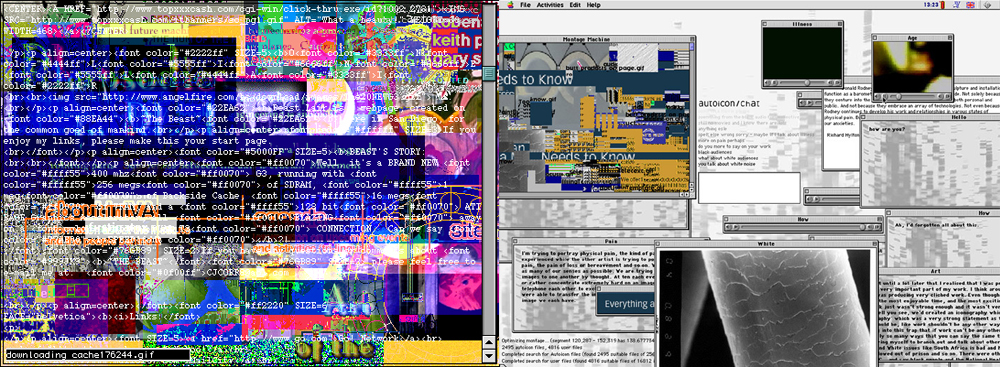
(https://i-dat.org/donald-rodney-autoicon/)
Source: Tate
Extract from essay ‘ AUTOICON: the digital body’ by Stephen Weller
“Understanding and reading Donald Rodney's AUTOICON projects it into our contemporary moment of machinic surveillance, algorithmic data collection and prediction, online identity construction and digital death. This essay considers the ways in which the structural, informational, and interfaced bodies of the internet materialize in/through data. It seeks to question whether the digital body has the ability to escape the confines of the physical, as well as how digital memory is conceived, constituted, and what it has the capacity to be used for”.
Source: Phhhyu
Stephen Weller is an Art History graduate from the University of Sussex (BA Hons., MA).
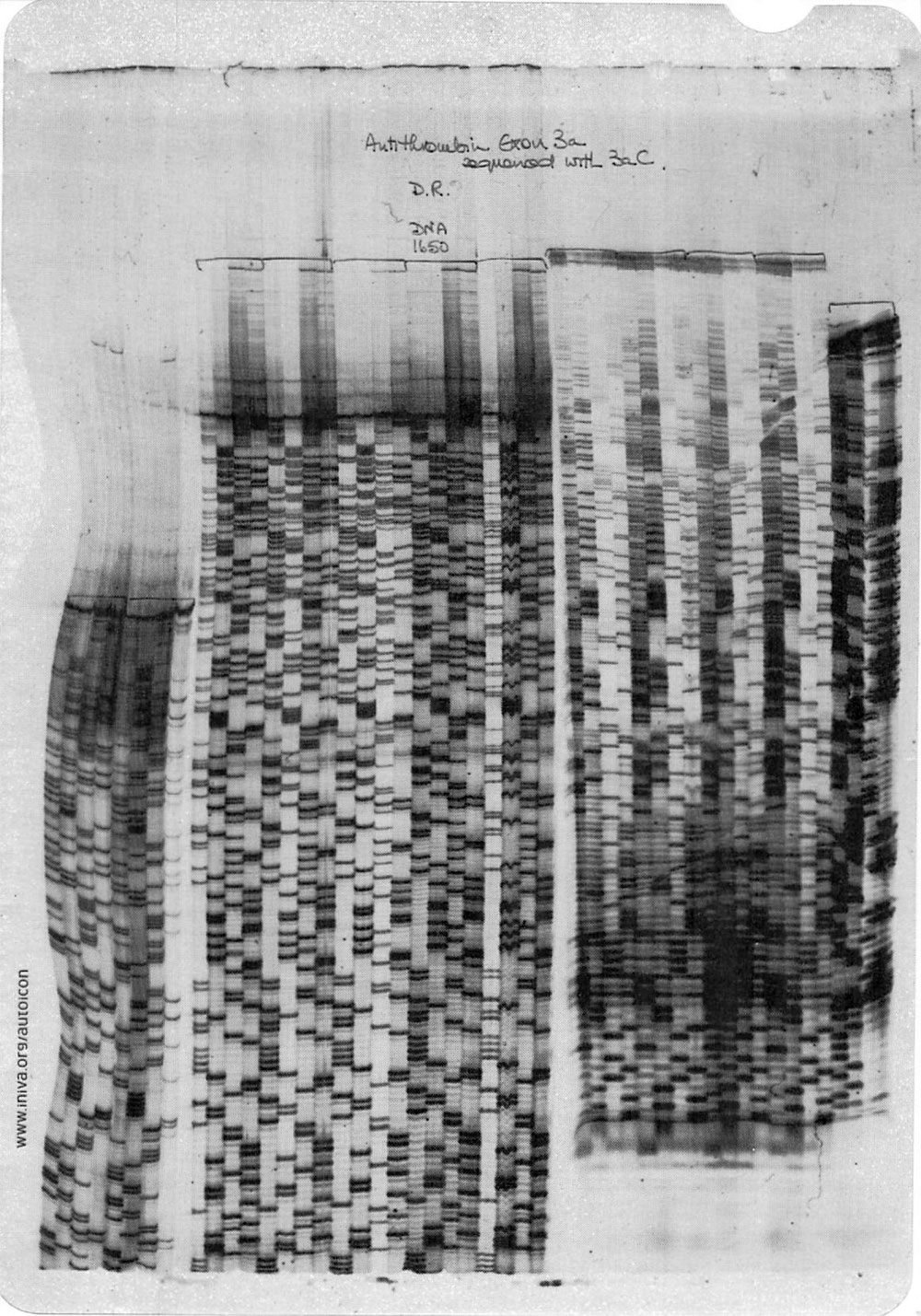
Back story Mike Phillips 10/10/14
“I can remember the exact location (…1997) that it became apparent that the body politic of a white middling (class/age) male would be of little interest. On a stretch of road, half way up the A38…frequently travelled with Donald in an ageing 2CV back in 1990...Bizarrely I had recently enacted a personal interpretation of this collaboration through my auto-exsanguination following an ulcer burst a year earlier, and this temporality of the body was a factor in the birth of Autoicon. Memories of all that blood…conjured up half forgotten conversations with Donald. In particular the one about the ticking clock that marks the passage of time for all sufferers of Sickle-Cell Anaemia – something about a life expectancy of 36/37 years.
I had worked with…Donald on many occasions since our time at the Slade School of Art (1985-87). Back then it was the soundscapes for his installation at the ICA and the donation of my work space, drawings and BBC B I/O boards for the cameraman to walk all over when filming his feature on the State of the Art TV programme…Autoicon would seem to consolidate that period of time, it embraced our many conversations of parallel generic histories sitting in front of Bentham’s glassy eyes, gave new meaning to a history of medical data and…engaged playfully with an inevitability. The mid 90’s were the age of the wannabe avatar, VRML showed such promise and cyberspace was almost tangible. To be in it, part of it, breathing the data, was an ambition being played out in media arts projects all over the world. Yet there was something ghostly and hollow about these apparitions, they were, for the most part just pixels, vague representations that could neither feel nor be felt. My hope was that, through Donald’s body of work and body politic the Autoicon marked an avatar upgrade that was both a homage to Bentham’s original and as rich and complex as his vision for his physical body…”
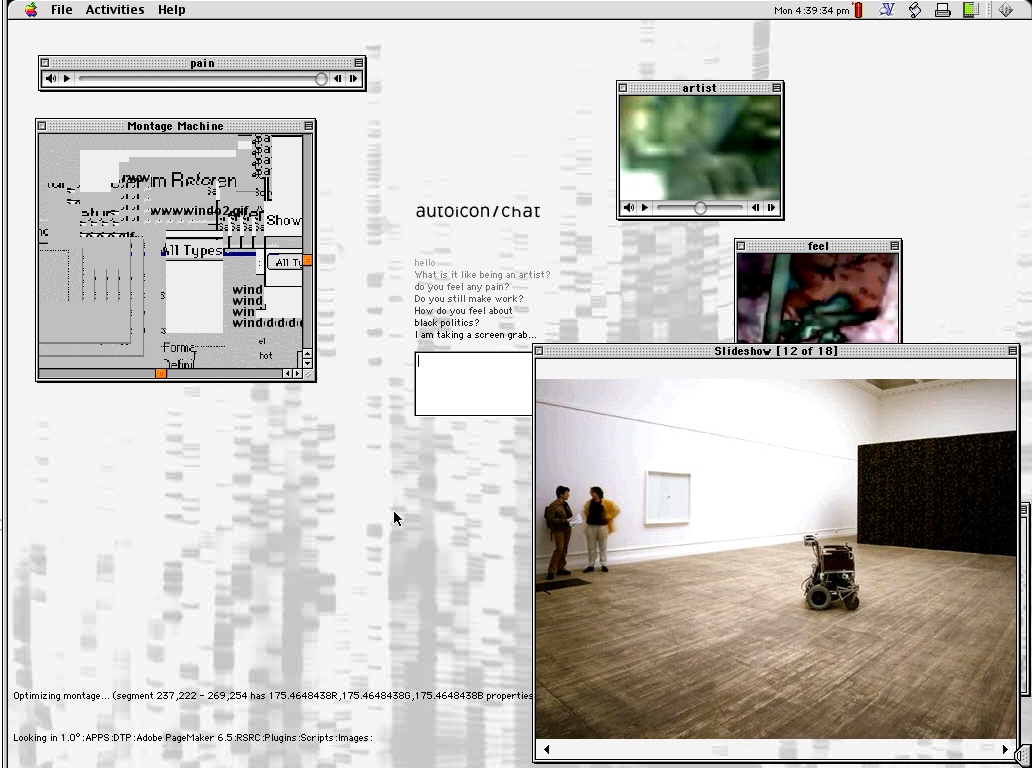
(https://i-dat.org/donald-rodney-autoicon/)
Through AUTOICON, participants can generate new work in the spirit of Donald’s art practice as well as offer a challenge to and critique the idea of monolithic creativity. In this way, the project draws attention to current ideas around human-machine assemblages, dis-embodied exchange and deferred authorship – and raises timely questions over digital creativity, ethics and memorial.
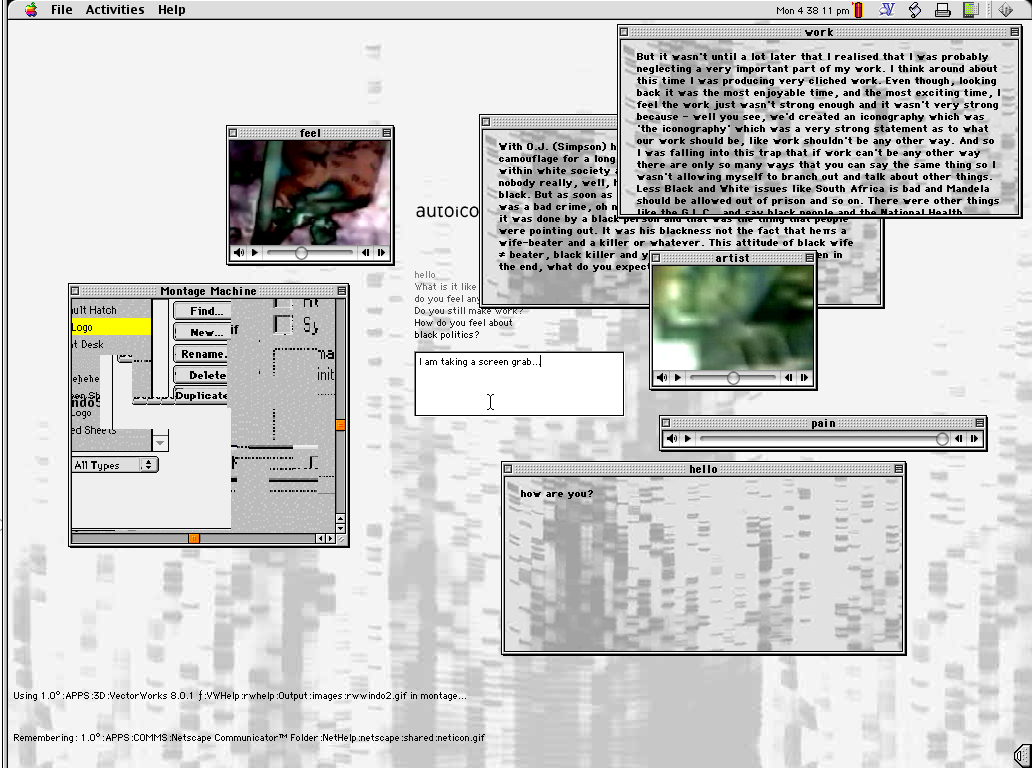
(https://i-dat.org/donald-rodney-autoicon/)
How the West Was Won
“The title of the painting refers to the epic Hollywood film How the West was Won (1962), directed by John Ford, Henry Hathaway, George Marshall and Richard Thorpe. This source is perhaps alluded to by the painting’s black border with white patches, which resembles that of a film frame. Whereas the film depicted the colonisation of the American West as a brave and exciting struggle, Rodney’s painting suggests a less heroic and more crudely violent narrative”.
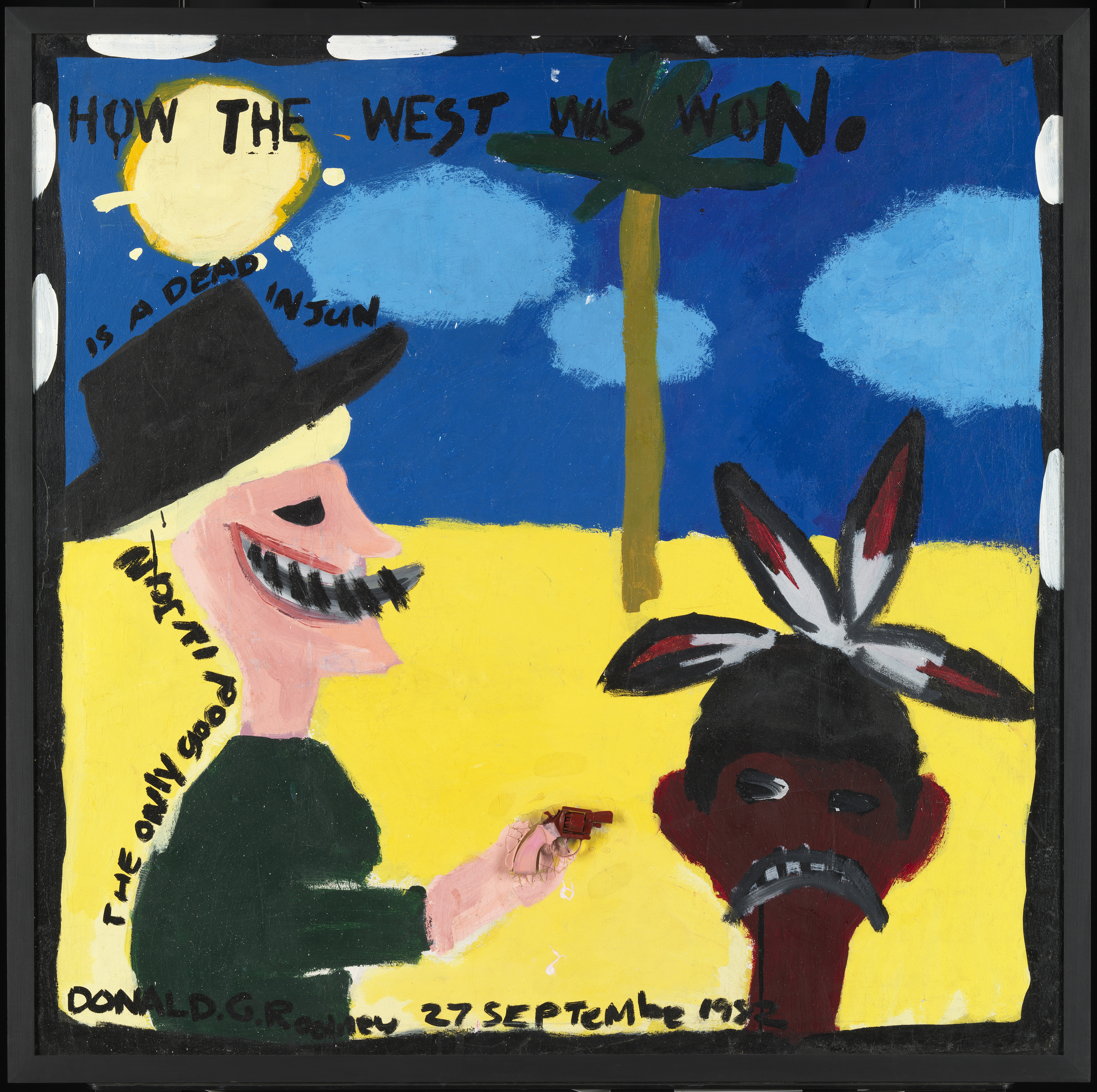 (https://www.tate.org.uk/art/artworks/rodney-how-the-west-was-won-t12768)
(https://www.tate.org.uk/art/artworks/rodney-how-the-west-was-won-t12768)
Extract of an interview by curator Marlene Smith about Donald Rodney
“How did you first meet Donald Rodney?
Marlene Smith
I first met Donald en route to our first meeting of the Blk Art Group. That must have been the summer of 1982. Keith Piper had ‘recruited’ us, (Donald at Trent Poly, me at an opening of a black art group show at the Ikon) and we had arranged to meet somewhere in Birmingham city centre, I can’t remember where now, in order to travel together to Eddie Chambers’s parents’ house in Wolverhampton. Donald, Keith and I took the train together.
What was Donald Rodney’s involvement in the Black Art movement of the 1980s?
Marlene Smith
This is a huge question. He was a member of the Blk Art Group which during its time organised two national conventions on black art, as well as exhibitions at several galleries around the country and many seminars and presentations. The work of the group, the very fact of it existing, had an impact on both the world of curators and cultural theorists and on other artists at the time and subsequently”.
Full interview by Marlene Smith discussing Donald Rodney and his work can be found here: Tate
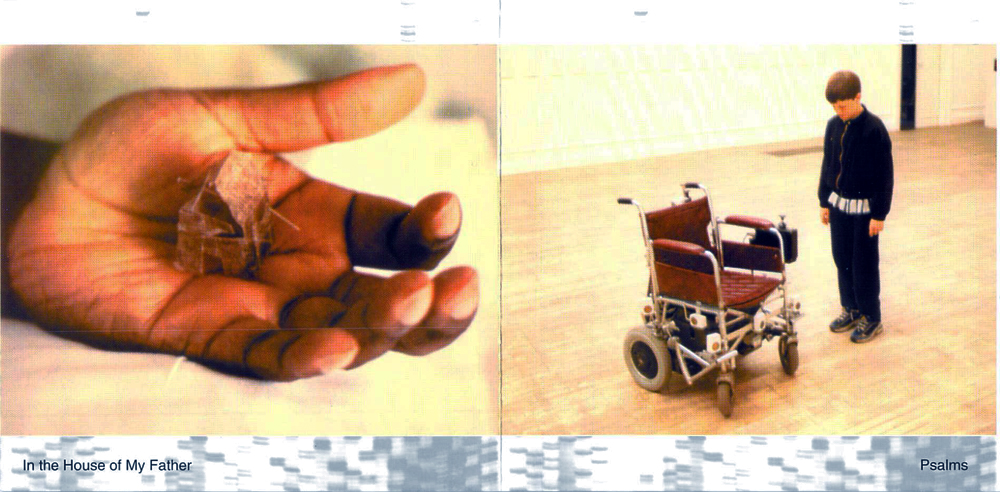
(https://i-dat.org/donald-rodney-autoicon/)
Further Reading
- Eddie Chambers, ‘The Art of Donald Rodney’, in Richard Hylton (ed.), Donald Rodney: Doublethink, London 2003, pp.20–41.
- http://www.vividprojects.org.uk/programme/reimaging-donald-rodney/
- Phillips, M., Cox, G. ‘Donald Rodney – Autoicon. The Death of an Artist’. In EMERGENT FUTURES, Art, Interactivity and New Media / FUTUROS EMERGENTES , Arte Interactividad y Nuevos Medios”. Eds Molina, A. and Landa, K.. ISBN 84-7822-326-6. Alfons el Magnanim. 2000, Valencia.
- Phillips, M. Memoria Technica, Donald G Rodney Autoicon. Mediaspace 5,
- https://iniva.org/blog/2020/05/01/review-autoicon-the-digital-body-a-work-by-donald-rodney/
- https://iniva.org/blog/2019/10/07/acknowledging-the-body-in-online-art/